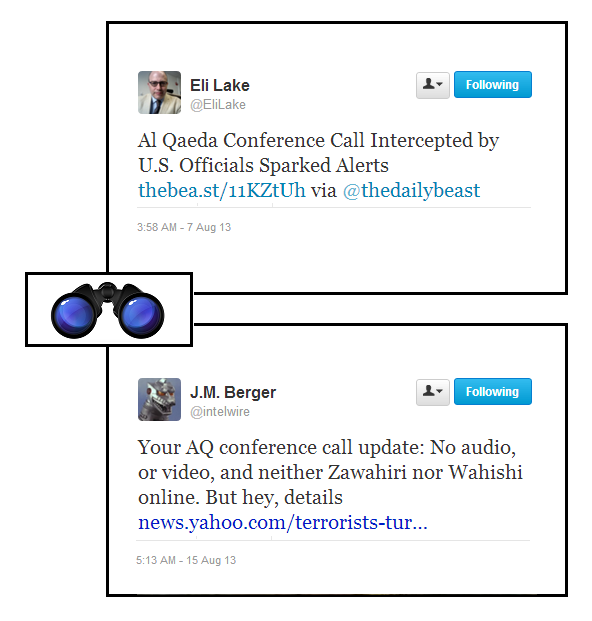[ by Charles Cameron — all the AQ leaders teleported into this one cave for their annual conference, see, and spoke to reporters as they were leaving for “near” and “far” – no wardrobe malfunctions, though ]
.
Following up on my post, AQ Conference Call, 1…
.
When Eli Lake and Josh Rogin broke the story it was huge, wardrobe-malfunction huge, although AQ doesn’t really do wardrobe malfunctions the way we do at the Superbowl:
It wasn’t just any terrorist message that triggered U.S. terror alerts and embassy closures—but a conference call of more than 20 far-flung al Qaeda operatives, Eli Lake and Josh Rogin report.
Okay, conference call, I’ve been on some of those. Phones, right?
@barbarastarrcnn We used conference call because it was generic enough. But it was not a telephone based communications.
— Eli Lake (@EliLake) August 8, 2013
Ah — Skype, maybe, or Google+?
Nope.
Nobody is disputing the facts of our al Qaeda story. Semantic debate over the term "conference call" totally misses the significance.
— Josh Rogin (@joshrogin) August 8, 2013
Semantic? Okay… but anyway, “The crucial intercept that prompted the U.S. government to close embassies in 22 countries was a conference call between al Qaeda’s senior leaders and representatives of several of the group’s affiliates throughout the region” — right?
Um, no.
Here’s the more recent piece by Lara Jakes and Adam Goldman for AP to which JM Berger’s quote (lower panel, above) was pointing:
Al-Qaida fighters have been using secretive chat rooms and encrypted Internet message boards for planning and coordinating attacks — including the threatened if vague plot that U.S. officials say closed 19 diplomatic posts across Africa and the Middle East for more than a week.
It’s highly unlikely that al-Qaida’s top leader, Ayman al-Zawahri, or his chief lieutenant in Yemen, Nasser al-Wahishi, were personally part of the Internet chatter or, given the intense manhunt for both by U.S. spy agencies, that they ever go online or pick up the phone to discuss terror plots, experts say.
More specifically:
A U.S. intelligence official said the unspecified threat was discussed in an online forum joined by so many jihadist groups that it included a representative from Boko Haram, the Nigerian insurgency that has loose and informal ties to al-Qaida. Two other intelligence officials characterized the threat as more of an alert to get ready to launch potential attacks than a discussion of specific targets.
One of the officials said the threat began with a message from al-Wahishi, head of the Yemen-based al-Qaida in the Arabian Peninsula, to al-Zawahri, who replaced Osama bin Laden as the core al-Qaida leader. The message essentially sought out al-Zawahri’s blessing to launch attacks. Al-Zawahri, in turn, sent out a response that was shared on the secretive online jihadi forum.
So the jihadis have a web-forum, and messages from Zawahiri get quoted there?
A stunning new development!
**
DoubleTweet Sources:
Eli Lake JM Berger
Articles pointed to:
Eli Lake JM Berger
**
Edited to add:
FYI, there’s an extended treatment of the whole affair by Ken Silverstein now up at Harper’s, Anatomy of an Al Qaeda “Conference Call” — h/t Joshua Foust.



